Many businesses have begun to embrace the idea of flexible working and working from home and, in the current climate, more and more of us may find ourselves plunged into doing so for longer than the one to two days a week, which employers and employees adapt to fairly easily.
 It is predicted that half of UK’s workforce work from home, but for those that don’t, this has meant adapting. This hub has been put together by SHP and The Healthy Work Company to provide research, case studies, videos and resources to enable you to lead this transition in a way which safeguards the wellbeing of your teams and maximises the opportunity to embrace new ways of working for the future.
It is predicted that half of UK’s workforce work from home, but for those that don’t, this has meant adapting. This hub has been put together by SHP and The Healthy Work Company to provide research, case studies, videos and resources to enable you to lead this transition in a way which safeguards the wellbeing of your teams and maximises the opportunity to embrace new ways of working for the future.
In an age where work and life need to integrate much more successfully, remote working can be a wonderful thing. But it is also full of pitfalls for both managers and employees. Our hub will help your organisation to navigate those.
Flexible working: Lessons from the pandemic
The CIPD has published a report which aims to set out strategies to make a success of hybrid working.
It is suggested that the enforced trial of homeworking has demonstrated to many that it works better than they could have imagined and perceived barriers have faded away as managers have learned to design work differently.
Looking to the future, 63% of participants in a CIPD employer survey said that they planned to introduce or expand the use of hybrid working to some degree, combining time in the workplace with time at home, depending on the needs of the job, the individual and the team, and the team working practices.
This report builds on the CIPD’s earlier research into homeworking during the pandemic and uses qualitative and quantitative research to identify seven strategies which organisations can use to make a success of hybrid working.
Line manager guide on supporting hybrid working
The CIPD has also published advice for line managers on supporting and enabling hybrid working, which suggests that post-COVID, most employees would prefer a balance where they are in the office for some of the week and at home for the remainder.
The Line manager guide on supporting hybrid working is available here.
7 strategies to make hybrid working successful in your organisation
Develop the skills and culture needed for open conversations about wellbeing
- Many managers reported that they found it harder to pick up on how staff were feeling when working remotely. In a remote environment, managers need to create opportunities to talk about non-work issues and actively encourage openness to talk about wellbeing. Employers should:
- upskill managers to discuss wellbeing confidently
- create an organisational focus on wellbeing.
Encourage boundary-setting and routines to improve wellbeing and prevent overwork
- Many interviewees recognised that the loss of boundaries – in time and place – could lead to working longer hours. In addition to longer hours, the temptation to work without taking breaks could also be a challenge. To tackle this, HR should support managers and employees to:
- establish boundaries and routines – and monitor them across the team
- take breaks between video calls
- notice signs of overwork.
Ensure effective coordination of tasks and task-related communication
- A number of interviewees recorded having to change the way that they co-ordinated work when it was performed remotely. To assist with this, employers should:
- set clear objectives
- calibrate the frequency of task-related communication
- develop more deliberate task-related communication.
Pay special attention to creativity, brainstorming and problem-solving tasks
- Some tasks were harder to do remotely than others: brainstorming and problem-solving were often cited as particularly difficult, because some of the shared ideas, energy and creativity was lost. To tackle this:
- take time to explore the functionality of the technological solutions
- identify which tasks are more effective face-to-face.
Build in time – including face-to-face time – for team cohesion and organisational belonging
- The enforcement of total homeworking, without any opportunity to meet face-to-face, over an extended period of time, undoubtedly challenged engagement. HR directors were aware of the challenge of maintaining an organisational culture virtually. Solutions include:
- creating common purpose across the organisation
- building personal and team relationships online
- building in face-to-face time, post-pandemic
- timetabling co-located working within teams.
Facilitate networking and inter-team relationships
- While intra-team networking might be taken care of by organising online team meetings and socials, inter-team networking shouldn’t be left to chance. Employers should aim to:
- create opportunities for co-working with other teams
- encourage inter-team relationships and networking at organisational level.
Organise a wider support network to compensate for the loss of informal learning
- While informal learning can take place at any point, interviewees recognised several points at which learning needs were particularly intense. The challenge was not limited to technical learning about the job, but extended to learning about the organisation. To ensure informal learning can continue, employers can:
- recognise the points when learning needs are more intense
- organise more structured development opportunities.
The report, and supporting documents, are available as follows:
- Flexible Working: Lessons from the Pandemic Report
- Flexible Working: Lessons from the Pandemic Case Studies
- Flexible working factsheet
WHO EURO has released a guide on how to stay physically active during self-quarantine.
UK workers ‘more productive’ working from home
Survey of 1,481 UK workers carried out by Cartridge People between June 2nd and June 18th ,
2020 has found that 40% of UK workers have been more productive when working at home, claiming it gives them a lot more flexibility with their time. Respondents said home working has helped to provide a much better work-life balance giving them more time to spend with family.
The survey also found that:
- Pre-lockdown, 29% were already working from home;
- Post-lockdown, 32% said they would now be working from home everyday;
- 22% work outside of usual office hours when working from home;
- 50% admit to getting more work done when using a home office;
- 54% say they’re happier working from home, compared to 18% who prefer to be in a traditional office environment;
- When working from home, 42% feel they have a good work-life balance. 24% say it can help them work around friends and family with 40% admitting it gives them more flexibility with their time;
- 58% say they never feel lonely when working from home, 14% say they often feel lonely when working from home and just 1% always feel lonely when they’re working from home;
- 60% enjoy working from home and just 1% dislike it;
- Windows that can open is what UK workers (55%) look for most in an office environment.
No plan for a return to the office for millions of staff
Fifty of the biggest UK employers questioned by the BBC have said they have no plans to return all staff to the office full-time in the near future. Some 24 firms said that they did not have any plans in place to return workers to the office. However, 20 have opened their offices for staff unable to work from home.
According to the BBC research:
- 24 companies have no plans to return staff to the office yet;
- 20 firms have gradual plans to reopen office space;
- 3 firms have brought back staff with no plans for more;
- 20 have opened offices for staff unable to work at home.
Half of UK employees worked from home in April 2020
Almost half (46.4%) of employees did some of their work from home during April, with the vast majority (86%) stating this was because of the COVID-19 pandemic, according to figures published by the Office for National Statistics.
The report highlighted that only 35.2% worked the same number of hours as usual. 34.4% of people said they worked fewer hours and 30.3% worked more hours than they would normally. The BBC recently reported that there have been calls to ban out-of-hours emails from bosses.
The date revealed how women were slightly more likely than men to do some work from home (47.5% compared with 45.7%), while workers aged 16-24 were the least likely to be able to work from home during April (30.2%). This is compared with 54.3% of people aged 25-34 and 51.3% of people in the 35-49 age bracket.
London residents were more likely to so some work from home than people in other regions of the UK. Some 57.2% London residents worked from home during April, compared with 35.3% of people in the West Midlands, which had the lowest rate of home workers during that month.
People in jobs requiring higher qualifications and levels of experience did more work from home than those in manual roles or skilled trade occupations. Some 69.6% of professionals did some of their role from home, whereas only 5.4% of process plant and machine operatives and 14.9% of people in caring, leisure and other service occupations could work remotely.
Home worker or lone worker?
Writing for SHP in 2018, Worthwhile Training’s Nicole Vazquez suggested employers need to be aware that their home workers are lone workers and should be treated as such, particularly when it comes to mental health and wellbeing.
The rise in home working has mirrored the rise in technology. Robust broadband means employees can now check-in with the office from the spare room, coffee shop or just about anywhere with an internet connection.
Benefits to employers are obvious; finances improve as overheads like office space and other facilities are offset as employers provide their own workspace. Workers often report increased motivation from the flexibility that remote working offers, increasing productivity and staff retention.
However, like the railway engineer and security guard the home worker is still classified as a lone worker; something often overlooked by employers.
Heather Beach, Founder of the Healthy Work Company, has been a home worker and has managed home workers for the last three years. She is ready to admit she made lots of mistakes and as a result had to research the topic thoroughly. She has started a Facebook group for those new homeworkers needing support with looking after themselves.
Why are video chats so exhausting?
Video chat is helping us stay employed and connected. But what makes it so tiring – and how can we reduce ‘Zoom fatigue’?
- Is video chat harder? What’s different compared to face-to-face communication?
- How are the current circumstances contributing?
- When I’m Zooming my friends, shouldn’t that relax me?
- How can we alleviate Zoom fatigue?
Home worker wellbeing webinar
Catch up with our health & wellbeing in the workplace webinar. With many employers advising staff work from home during the coronavirus outbreak, it also look at how period of self-isolation or prolonged time working from home can affect health & wellbeing and require a different approach from managers. The session featured Faye McGuinness, Head of Workplace Wellbeing Programmes at Mind, Heather Beach, Founder and Managing Director at The Healthy Work Company and Teresa Higgins, Brand Director at Barbour EHS.
It covered:
- Mental Health at Work – the current picture across the UK;
- Insights from Mind’s 2018/19 Workplace Wellbeing Index;
- ROI: The ‘low hanging fruit’ versus organisation culture change;
- Practical steps employers can take: The Mental Health at Work Commitment;
- Wellbeing of remote workers: A period of self-isolation or prolonged time working from home can affect health & wellbeing and require a different approach from managers. Here are some considerations for both individuals and their managers.
Click here to watch back for free.
Tips for working from home
 There is no doubt that as well as the anxiety provoked by a potentially deadly virus and no toilet roll or pasta in the supermarket, we are also facing the very likely fact that many workers will be being plunged into home working for the first time, to speak nothing of the potential requirements for isolation.
There is no doubt that as well as the anxiety provoked by a potentially deadly virus and no toilet roll or pasta in the supermarket, we are also facing the very likely fact that many workers will be being plunged into home working for the first time, to speak nothing of the potential requirements for isolation.
Some of those workers may already have experience of a day or so a week, but few of them will have worked full time from home and few of their managers will have managed large teams in such a situation either.
A report from the World Economic Forum in 2019 pointed to the fact that a 2017 United Nations report found that 41% of remote workers reported high stress levels, compared to just 25% of office workers. The WEF believed that being ‘out of sight, out of mind’ and the tendency for managers to become increasingly task focused and actually attempt to micromanage more than before was partly to blame.
Conversely, Charalampous et al. in 2018 found that remote working was associated with higher workplace wellbeing with the benefit of flexibility and autonomy.
What we do know though, according to ACAS guidance is that “only suitable people should be offered the choice of regular remote working” (with suitability not just about them as people but also about their home set up). And here we are about to put everyone, suitable or not, into that boat, in an environment which is already highly charged.
The research on how to be a good home worker is mostly focused around entrepreneurs who are accountable just to themselves. The research on how to be a good manager of remote teams is sparse.
10 tips to avoid stress when working from home
- Dress for work
- Adapting to change
- Exercise and eat healthily
- Using technology
- Working with family at home
- Plan work in blocks of time
- Find a buddy
- Getting the right balance
- Home and work life
- Sleeping at night
Occupational health and safety in the home
Here are some considerations to take into account when managing the risk to home workers.
- Create good work spaces;
- Create routines;
- Keep in contact.
Home working laptop ergonomics: Basic tips
Here are some top tips for home working in imperfect circumstances (click to enlarge the image)…
Useful resources:
Home working: Directors briefing.
Home working essentials for managers.
Home working: Employee factsheet.
A guide to home working.
Home working for young workers
Fire safety warning as millions work from home.
No ‘magic bullet’ to solving workplace wellbeing.
Data and security considerations for remote working.
Protecting your eyes while working from home
Roshni Patel, BSc (Hons) MCOptom, Professional Services Manager at Lenstore, shares three top tips on how you can protect yourself against eye strain and fatigue whilst working from home.
Positioning your technology devices
 In an office, you’re likely to have a good quality desk and chair that make it easy to position your devices at a healthy distance from your eyes. It’s just as important to ensure you do the same at home. A few things to pay attention to include:
In an office, you’re likely to have a good quality desk and chair that make it easy to position your devices at a healthy distance from your eyes. It’s just as important to ensure you do the same at home. A few things to pay attention to include:
- Lighting and glare;
- Distance from screen;
- Blue light software;
- Blue light lenses;
- Screen brightness;
- Text size and contrast.
Combating dry eye symptoms
Dry eyes can cause your eyes to feel heavy and disrupt the quality of your vision which can lead to symptoms of eye fatigue. As well as ensuring a healthy work space for your vision, there are methods to help reduce dry eye whilst working from home:
- Blink regularly;
- Take breaks;
- Eye drops;
- Drinking lots of water and keeping hydrated.
Looking after eye hygiene
Eye hygiene is an important consideration at all times, but especially while coronavirus is in effect. You should wash your hands regularly, and it is recommended that you wash your hands for at least 20 seconds, scrubbing the backs, thumbs, and fingertips as well as your palms. This will help prevent infections both generally and in your eyes.
For those who wear contact lenses or spectacles, there are other considerations. Follow the guidelines below to prevent any irritation in your eye and protect your vision:
- Keep glasses clean;
- Use only solutions recommended by your optician on your lenses;
- Throw away disposable lenses;
- Clean your case.
In addition to the above, it is important to be aware it is still perfectly safe to wear contact lenses in the current circumstances.
Click here for more information on protecting your eyes while working from home.
Home working: Employee factsheet
If you work from home, your employer must make sure there is a risk assessment of your work activities. With the current government guidelines in place, HSE says it is not necessary for someone to visit you, but you should complete a questionnaire and provide appropriate evidence e.g. photographs. This will help decide if sufficient steps have been taken to prevent harm to you or anyone else who may be affected by your work. HSE has also said that a DSE risk assessment is not required for this period.
Work-Life Balance Campaign
Work-life balance has been on the political agenda since 2000 when the Government launched its Work-Life Balance Campaign. Home working comes under the category of flexible working arrangements, a concept which is actively promoted under the Employment Rights Act 1996, as amended by the Children and Families Act 2014. The Children and Families Act 2014 means that any employee with more than 26 weeks service can request flexible working, regardless of whether they are carers or parents. This legislation does not create a right to flexible working, but the employer has to consider a request seriously and there are set procedures for the employer to follow and the reasons for refusal have to be provided to the employee in writing.
This guide includes:
- Legal requirements;
- Benefits of working from home;
- Successful working from home;
- Pitfalls of working from home;
- Managing home workers;
- Arrangements for securing health & safety at home;
A third of employees are worried about their mental health whilst working from home
A survey, carried out by Aetna International, has polled 4,000 office-based employees and 1,000 employers in the UK, U.S, Singapore and the UAE, and discovered that a third of employees have expressed concern for their mental health whilst working from home during the COVID-19 pandemic.
Many employees believe that remote working is having serious effects on their health and wellbeing:
- 43% of employees are worried about gaining weight whilst working from home;
- 33% are concerned about mental health issues such as depression or anxiety;
- 32% are worried about the level of stress experienced whilst working from home.
As COVID-19 continues to spread across the globe, the majority of employees are placing a greater emphasis on their health and wellbeing:
- 84% agree that their mental health is more important now than it was a year ago;
- 89% of employees agree that their physical health is more important now than it was a year ago.
When asked about the different ways everyday life and work-related pressures have impacted their performance at work since the outbreak of COVID-19, employees revealed that factors associated with the pandemic have had an increasingly negative effect:
- 70% said that stress from being locked down alone has had a negative impact on their work;
- 47% said stress from the challenge of juggling work and home-schooling children has also negatively impacted their performance.
Younger employees admitted that their work is suffering on an even larger scale whilst working from home during the pandemic:
- 88% of 18-24-year-olds have had their work negatively affected by mental health issues compared to the 74% global average;
- 76% of 18-24-year-olds and 75% of 25-34-year-olds say stress from a blurred work/life balance has also negatively impacted their work compared to the 67% global average.
Employees working for small businesses (those with under 200 employees) are experiencing increased stress whilst working from home compared to those employees working for the biggest businesses (those with over 5,000 employees):
- 73% of employees at small businesses have had their work negatively impacted by stress as a result of working long hours during the pandemic compared to 61% of employees at big businesses;
- 65% of those working for small businesses say their work has been negatively affected after being expected to do more with less because of budget cuts compared to 51% of employees at big businesses.
Coronavirus: How to protect your mental health
Coronavirus has plunged the world into uncertainty and the constant news about the pandemic can feel relentless. All of this is taking its toll on people’s mental health, particularly those already living with conditions like anxiety and OCD.
The BBC has produced the following article on protecting your mental health during this pandemic.
In May 2020, the Healthy Work Company set out to understand levels of wellbeing and mental health during these uncertain times. With the aid of an online questionnaire, the opinions of 648 people collected. The sample covers a balance of genders and a wide range of ages and geographies.
The report shows a strong swing to extremes in the nation’s mental health with one in four (24%) seeing an improvement to mental health and 8% “flourishing”. Of those questioned, 41% feel ‘about the same’ as usual and a further one in three (32%) reported a decline or negative movement in their mental health.
Click here to analyse the data in full.
Managing COVID19 anxiety
Musculoskeletal disorders
A recent seminar, held in 2019 by law firm, Clyde & Co, titled Effective Safety Leadership in the Workplace, suggested that employers must provide extra care for employees that work from home, or there will be an increase number of musculoskeletal disorders (MSDs).
Clyde & Co Partner, David Tait, emphasised that “the modern workplace includes working from home. Indeed, it’s a practice that’s encouraged by many employers. Employees have to work in an agile manner, which includes using laptops in locations like train stations and coffee shops”.
FormScore

The brainchild of Rob Stephenson, FormScore is a designed to help people to monitor their mental health. Form was created as a simple way to track mental wellbeing on a day-to-day basis using a score, out of ten. From there, FormScore has evolved to be much more than a mood tracker. The App connects people with friends, family and colleagues to help support each other when feeling low and celebrate when riding high.
Now more than ever, people need to be able to keep track of their mental health and support those around them.
The stigma of mental ill-health often makes it hard to share how we are feeling. The effects of the pandemic mean that 100% of us will know what it is like to struggle with mental health to some degree or another. Yet we are required to be physically distant from those who might be able to offer support. FormScore provides a new and simple way of communicating with a score out of ten. Then the app facilitates connection between those we trust in order to make us aware of when friends might need a check in and also lets them know when we might need some support.
Check out FormScore for more detail or grab FormScore in the App or Google Play Stores.
Government launches plan to tackle loneliness during coronavirus lockdown
The Government has launched a major effort to tackle loneliness and social isolation during the coronavirus outbreak and period of social distancing. Led by Culture Secretary Oliver Dowden, the plan will aim to ensure that, for people of all ages and backgrounds, staying at home does not need to lead to loneliness.
The latest #Let’sTalkLoneliness public campaign has been rolled out to get people talking openly about loneliness, which includes new public guidance offering useful tips and advice on what to do to look after yourself and others safely.
Three tangible actions for anyone feeling lonely and three actions for people wanting to help If you are lonely you can:
- Keep in touch with friends, family and neighbours;
- Ask for help if you need shopping, medicine or are feeling lonely;
- Set a routine with online activities, regular tasks or by volunteering.
If you are worried about someone who is lonely:
- Phone a friend or family member you think may be lonely;
- Smile, wave or chat from a safe distance with a neighbour;
- Help out through volunteering by picking up food, medicine or by offering regular conversation to someone living alone.
More information about ‘Let’s Talk Loneliness, can be found here.
8 tips to combat the negative health effects of social isolation
To help people limit the impact of loneliness on their health and wellbeing during this time, health service provider Cigna Europe has outlined its top eight tips:
- Avoid negative thoughts. Constantly thinking about the negatives associated with isolation can worsen emotional distress. Accepting the situation is the first step in controlling our emotions and minimising the chances of feeling lonely;
- Use technology to create emotional connections. Social relationships are essential for both our physical and mental health. Now it’s more important than ever to maintain regular contact with our social circle. This can be done via video calls, instant messaging or phone conversations. However, we must use these means in a healthy way – avoid placing COVID-19 at the centre of all conversations and try to talk about other things that will help distract us;
- Practice meditation techniques. Mindfulness or conscious breathing can become great allies to calm anxiety and reduce stress. Breathing and meditation exercises can even help delay the ageing of our brain, helping the immune system react more strongly in the production of antibodies;
- Maintain a certain level of physical activity. Physical exercise helps release endorphins in the brain, so if a certain level of activity is maintained during this period, the production levels of these hormones will remain high. There are many online resources available to help you exercise safely at home, whatever your fitness level;
- Watch your diet – it’s essential to improve our mood. Since approximately 95% of serotonin – the hormone that works as a neurotransmitter and regulates sleep, appetite, and mood – is produced in the gastrointestinal tract, a balanced diet will be essential to cope with loneliness, as indicated by Harvard University. In this way, eating more foods such as white meat, eggs, pulses, whole grains, nuts, seeds, bananas or dark chocolate, always within the limits of a balanced diet, will contribute to improving our mood;
- Communicate regularly with colleagues. Adjusting to working from home can impact people’s emotional well-being as the work environment is often a place for social interaction. For this reason, it’s important to continue maintaining regular communication with colleagues, either by phone, email or videoconference;
- Get some sun, if possible. Sunlight strengthens our immune system and improves our mood, as it stimulates the synthesis of vitamin D, a key substance for the central nervous system that helps control depressive symptoms. Sun exposure should last between 10 and 20 minutes a day;
- Establish a routine with regular sleep schedules. It’s important to set schedules and maintain routines, especially regarding hours of sleep, eating and physical exercise. The longer we are busy, the lesser room for loneliness.
5 tips to avoid burnout out whilst working from home
Business Growth Consultant Daniel Groves runs through five key ways that you, the employee, can avoid becoming burnt out and disengaged while working from home:
- Maintain your work routine;
- Recreate the office environment;
- Take regular breaks & walks;
- Set boundaries;
- Don’t get hung up on ‘normal’.
Click here to read thse top 5 burnout tips in full.
Workplace Wellbeing Show
Workplace Wellbeing Show 2021 consists of a high level virtual Conference, from 1-3 June, and a month-long virtual event, from 1-30 June 2021). Mind continues to be the event’s official charity partner.
Alongside official charity partner Mind, the Workplace Wellbeing show will being a wide-range of live content and interactive sessions on stress, mental ill-health and wellbeing.
Training for home workers

The British Safety Council is offering free online training courses for home workers as the nation changes its working habits to meet the threat of coronavirus. As millions of workers in Britain set themselves up to work from home, they will be adjusting to a whole new way of working and preparing to miss the social contact of their workplace. To support them the British Safety Council is offering courses for free until the middle of April:
- Remote Workers’ Health Safety and Welfare;
- Mental Health: Start the Conversation are aimed at all employees.
There is also a course on Managing Stress Within Your Team – helpful to managers looking after teams working from different locations at a time of major national crisis.
Employers are required to protect the health, safety and welfare of all employees, including those who are working away from the office.
Mike Robinson, British Safety Council, Chief Executive said: “Across Britain people are making big changes to their work routine and millions of people are working from home for the first time. This will mean quite an adjustment for lots of people. Working away from the office has implications for workers and managers.
“Even in normal times it’s important for peoples’ wellbeing to make sure they are connected to their colleagues and their work if they are not coming into the workplace – at a time of serious anxiety in the life of our country keeping an eye on your wellbeing and your colleagues’ wellbeing will be really important.”
“It is our founding mission at the British Safety Council to ensure that nobody is injured or made ill through their work – and that includes people working from home in a national crisis. I hope by offering out our expertise for free with some accessible online courses people will see some real value.”
Home working essentials for managers
The fear pandemic is something that each of us has to manage – anxiety loves the words ‘what if’ – so how can you manage your head and overcome your feelings when they are overwhelming and how can you help others who may be struggling too? Click here for some top tips.
Barbour EHS has put together this handy guide, which details what managers should consider while employees are temporarily working from home.
While employees are temporarily working from home you should consider:
- The best way to keep in touch with them
- What work will they be doing?
- Is the planned work able to be completed safely?
- Are control measures needed?
Click here for the home working essentials for managers.
What are your rights if working from home?
The BBC has provided the following home working advice page, looking at who provides the equipment when working from home and who is responsible for workers while they work at home.
Home working for young workers
While the world battles COVID-19, everyone who can is now having to work from home. For young workers and their managers this may present additional considerations and challenges to be overcome…
[interaction id=”5e708d3d18631a92663c2adc”]


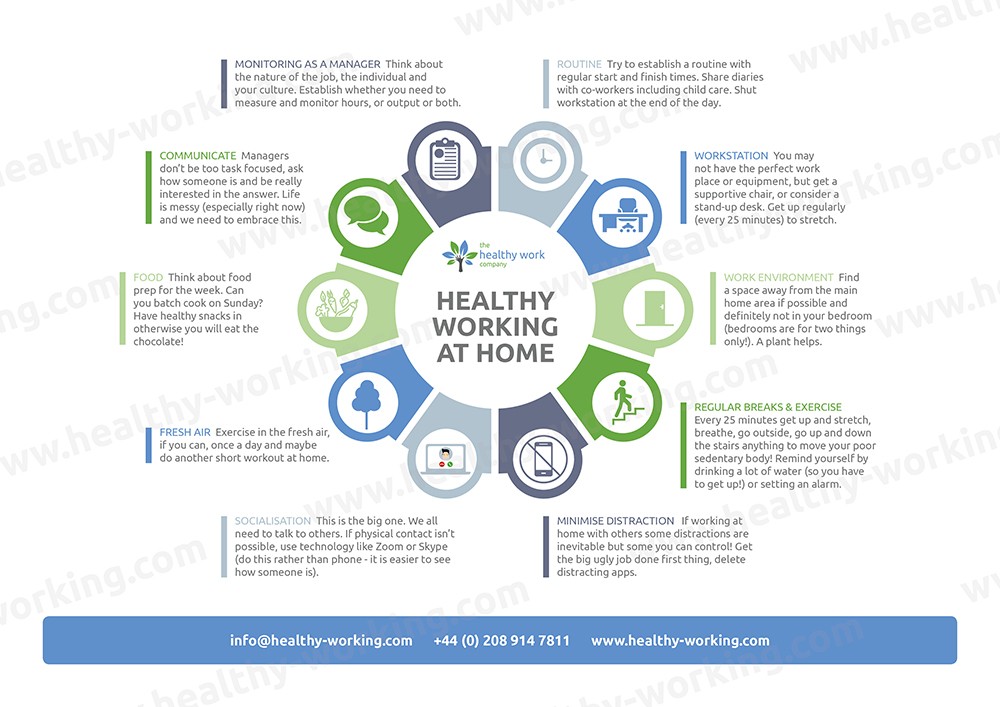
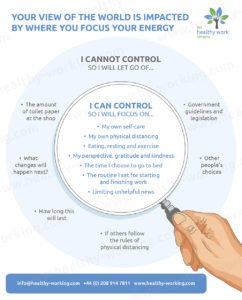
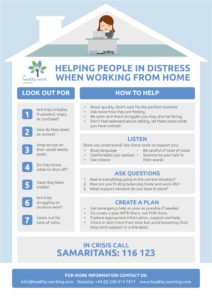
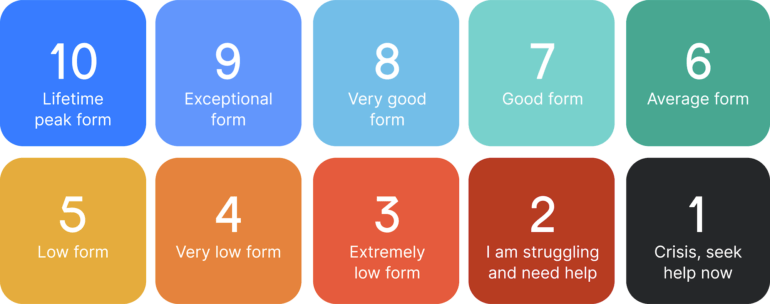
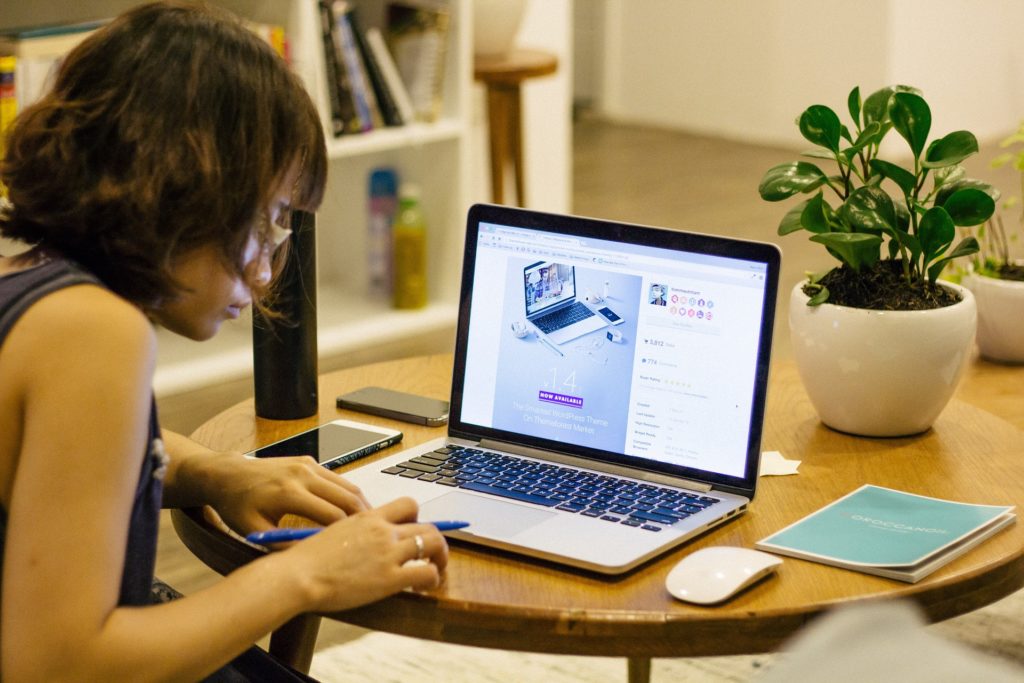


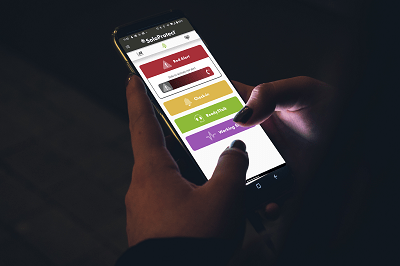


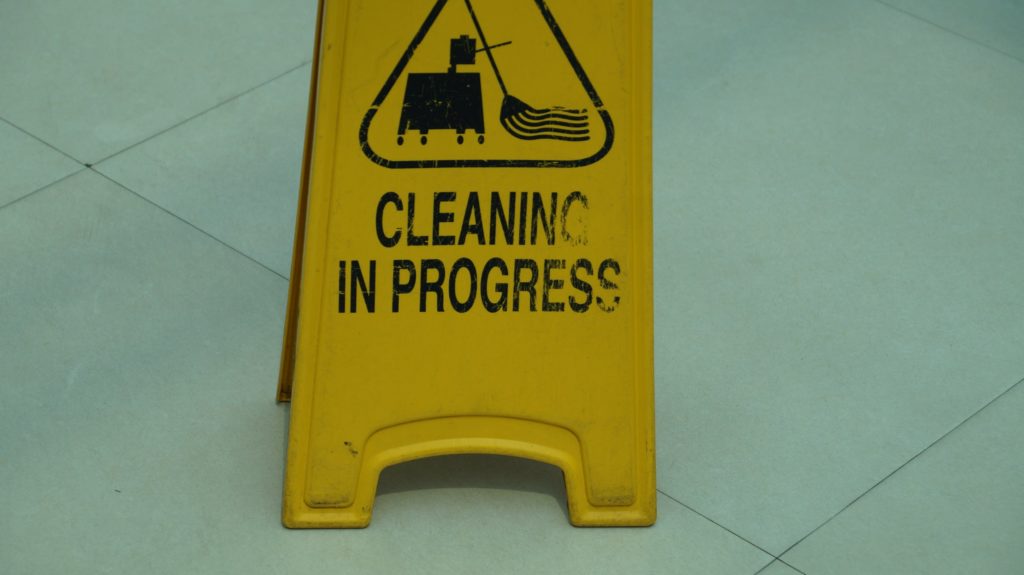
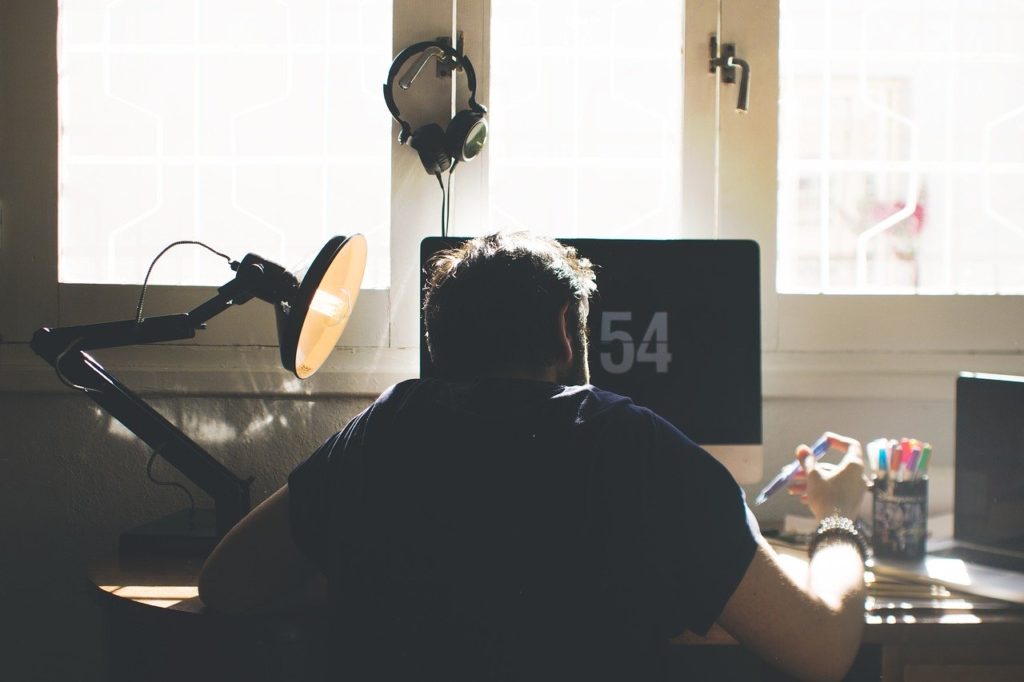
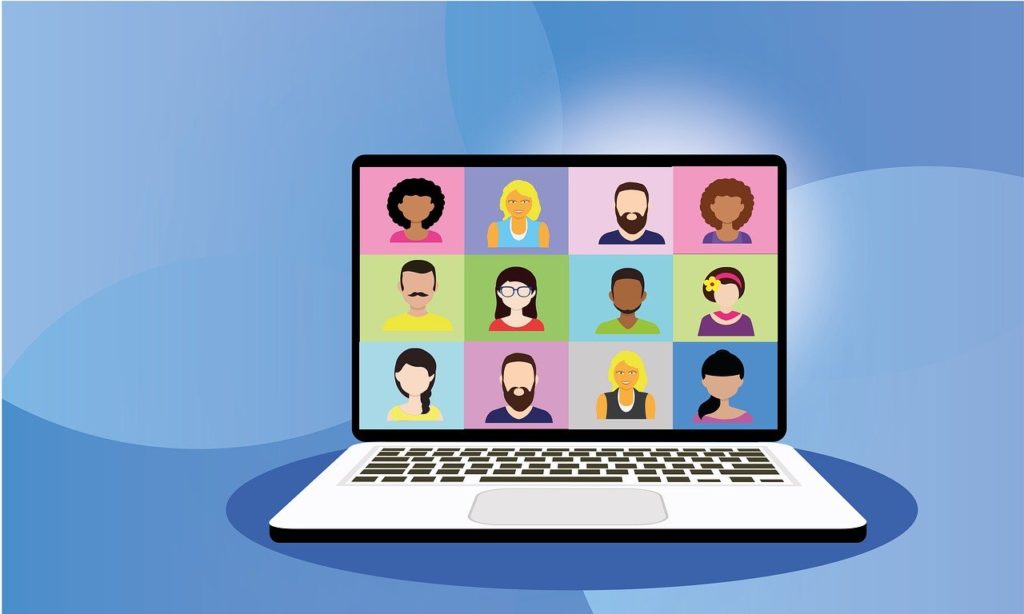


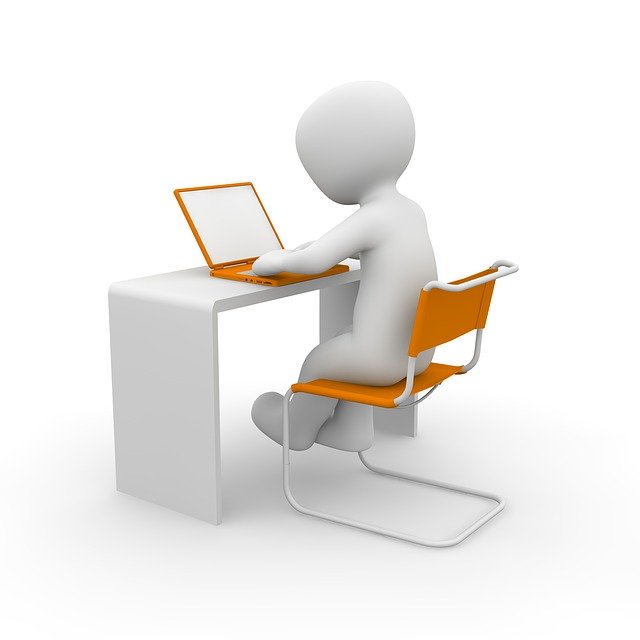


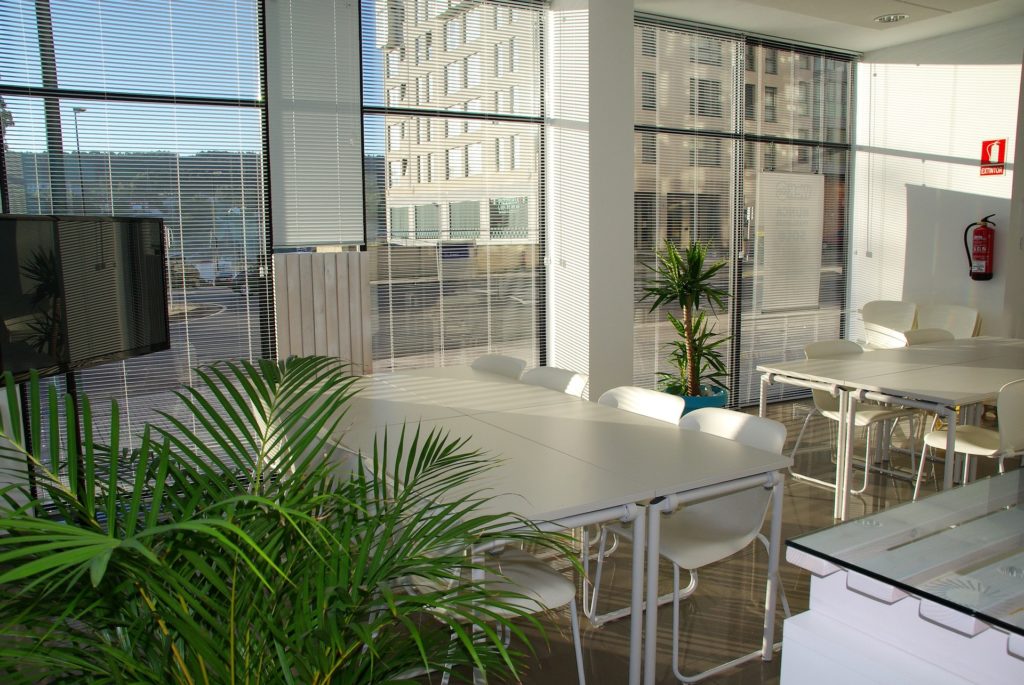
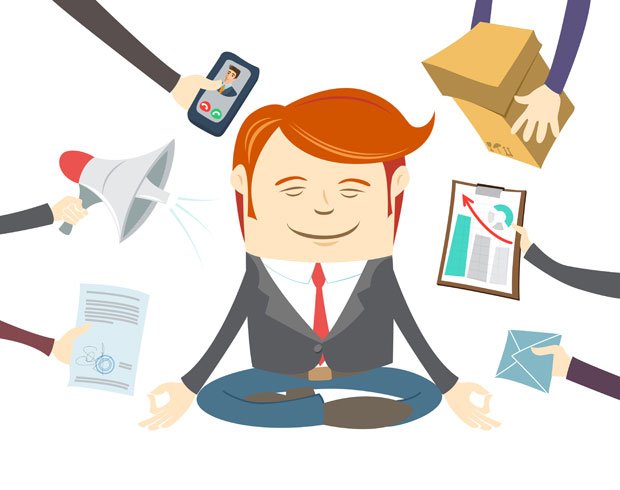

This is a really good article and very informative and even gives some good information on those who have always worked from home in their job.
I am now semi-retired but spent the last 35+ years as a ‘homeworker’ which is to say I worked from home but also attended various sites each day then came back to report. More recently tablets were supplied to report on site which was not as effective for all and gave rise to some further issues.